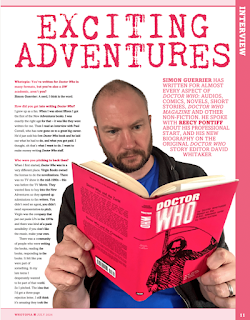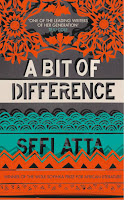First published in 2014, this is a collection of eight longish short stories — each comprising more than 50 pages. It’s the first Aickman I’ve read, after lots of recommendations. And days after finishing this collection, I’m still trying to make sense of what I might think of it all.
I’d been expecting something in the vein of MR James, and there’s a similar slowly dawning disquiet. But Aickman’s protagonists are ordinary, relatable people rather than James’ bookish academics. There’s also a strong sexual element, very unlike James. In “The Wine-Dark Sea”, Grigg has sex with these sirens; in other stories here, the sexuality is less certain — we’re not always sure if characters are being predatory, or if actions speak of deep-felt desire. But part of the effect is that we’re put on our guard.
That’s a big element of “The Trains”, in which two young woman, Margaret and Mimi, are out rambling and get caught in a storm. They seek shelter in a strange old house overlooking a railway line, and find it a museum to the construction of that same railway. Mimi is enchanted by the owner of the house, Wendley Roper, but Margaret is more sceptical. And yet Mimi is scandalised and Margaret more matter of fact when Roper’s “tall, muscular” servant, a gothic figure called Beech, walks in them while they’re getting changed and Margaret is “absurdly naked”. Was it an accident? As the story progresses, there’s an every growing sense of threat.
In “Your Tiny Hand is Frozen”, lonely Edmund St Jude (landline) phone keeps ringing. Initially, he hears, odd ghostly voices or gets people trying to reach a particular business. And then he strikes up a friendship with a woman who seems keen to reach him in person… This reminded me a lot of Nigel Kneale’s 1952 radio play “You Must Listen”, which I saw a live performance of last year. Both are supernatural stories about technology that was then cutting edge and which people all had in their homes; an encroachment of the strange into the very familiar and everyday.
The best of the bunch here, I think, is “Growing Boys”, about a mild-mannered middle-class woman, Millie, whose sons are fast becoming something monstrous, though their school won’t spell out exactly why they’re being expelled. It’s a comedy of manners and yet brilliantly disturbing.
At one point, Millie tries (again) to talk to her husband Phineas, but he’s too caught up in his own aspirations to stand as a Liberal. Besides, he’s also teetotal.
“If only one could give him a proper drink before one attempted to talk seriously with him; that is, to talk about oneself.
‘It’s the boys, Phineas. You don’t know what it’s like being at home with them all day.’
‘The holidays won’t last for ever.’
‘After only a week, I’m almost insane.’ She tried to rivet his attention. ‘I mean it, Phineas.’
Millie knew extremely well that she herself would be far more eloquent and convincing if Phineas’s absence had not years ago deprived her too, though with never the hint of an express prohibition, but rather the contrary. When she was reading, she had learned of the Saxons never taking action unless the matter had been considered by the council, first when sober and then when drunk. It was the approach that was needed now.
‘What’s the matter with the boys this time?’ asked Phineas.
Millie twitched. ‘They’re far too tall and big. How long is it since you looked at them, Phineas?’
‘Being tall’s hardly their fault. I’m tall myself and I’m their father.’
‘You’re tall in a different way. You’re willowy. They’re like two great red bulls in the house.’
‘I’m afraid we have to look at your family for that aspect of it. Consider your Uncle Nero, if I may venture to mention him.’” (pp. 153-154)
We get here Millie’s despair, hints of the monstrosity of her sons which we then conjure for ourselves, and the way Phineas undermines her — and puts the blame on her, too. Later, when Millie moves in with her Uncle Stephen, he carries her to bed and then, later, welcomes her into his own bed where he can “look after” and “protect” her (p. 192). The sense is of something more brooding and sexual going on, another monstrous something in the family. What’s more, when Millie consults a psychic, she spots other women she knows seeking their own advice — as if the whole community is beset with unsettling strangeness.
In “The Fetch” a man is haunted by a ghostly spectre who carries off his loved ones. Again, the story is as much about the man’s strange marriage to a friend’s ex-wife, and her relationship with her maid, with hints of something sapphic.
“The Inner Room” is about a doll’s house that turns out to have a peculiar real-life counterpart. “Never Visit Venice” sees a traveller give himself up to the spectres of the city. And then there’s “Into the Wood”, about an English woman whose husband is employed to work on road construction in Sweden. While he is busy in this boring line of work, she checks herself into a beguiling hotel, which turns out to be a sanatorium for people who cannot sleep. At first, she seems unaffected… But the title is not about what happens to Margaret Sawyer, but what she will have to do next, beyond the end of the story as told.
Some stories here end decisively, revealing exactly what’s been going on. Others end more opaquely, leaving us to puzzle out their prospective meanings. They’re all very odd, the main thread of plot peppered with other strangeness in passing. And yet they’re also grounded in real details. Aickman is clearly well-read, the stories full of specific detail.
“[‘Orm’ meaning ‘serpent’] was one of the few Swedish words Margaret felt more or less able to manage. The high tessitura in which the language is spoken, the combination of breath and altitude in the vowel sounds, were quite beyond her.” (pp. 375-376)
Or there’s Margaret Sawyers ’s reference to her own Manchester home in the “Cheshire subtopia” (p. 378). That last word is the coinage of Ian Nairn, railing against the nightmare of post-war British architecture, where all urban space looked the same so you could might never know where you were. I think that’s what makes these stories so effective. Aickman isn’t so much adding new strangeness into the recognisable, everyday world; he’s teasing out and showing us what’s already there.
See also: me on Dark Tales by Shirley Jackson



































